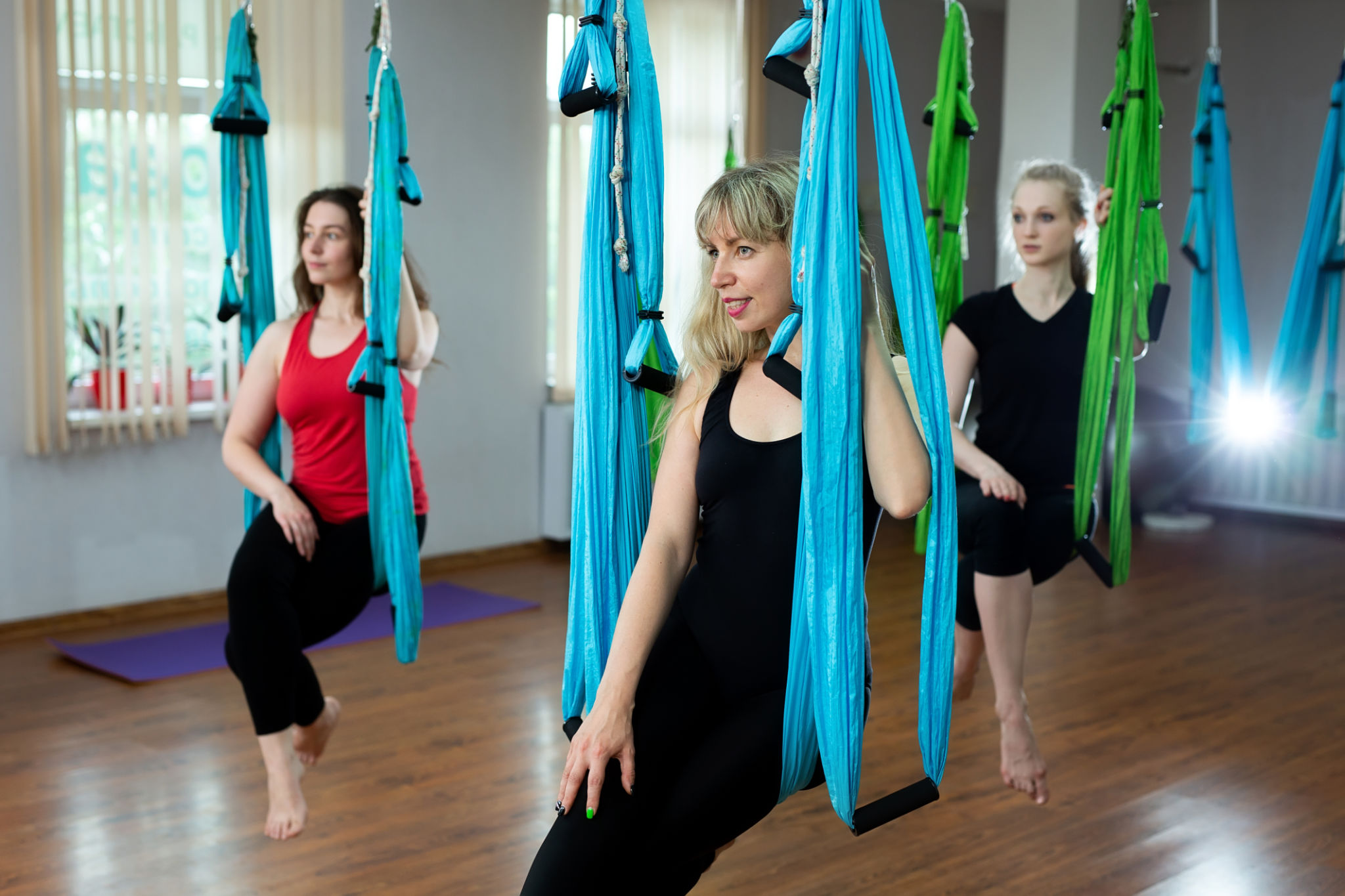Common Myths About Aerial Yoga Debunked
Understanding Aerial Yoga
Aerial yoga, a unique form of exercise that combines traditional yoga poses with the use of a hammock or silk, has gained popularity for its ability to enhance flexibility, strength, and mindfulness. However, like many innovative fitness trends, it has its fair share of myths and misconceptions. Let's explore and debunk some of the most common myths surrounding aerial yoga.

Myth 1: Aerial Yoga Is Only for the Young and Fit
One of the prevailing myths is that aerial yoga is only suitable for the young and extremely fit. In reality, aerial yoga is designed to be accessible to people of all ages and fitness levels. The hammock supports the body, making it easier to perform poses that may be challenging on the ground. Many studios offer classes tailored to beginners, ensuring a safe and welcoming environment for everyone.
In fact, aerial yoga can benefit older adults by improving balance and flexibility, while providing a low-impact workout that is gentle on the joints. Regardless of age or fitness level, participants can modify poses to suit their individual needs.
Myth 2: You Need Special Skills to Start
Another common misconception is that aerial yoga requires special skills or previous experience in gymnastics or dance. While these skills may be helpful, they are not necessary to start practicing aerial yoga. Most classes begin with basic poses and gradually introduce more complex movements as participants become more comfortable.

The key to success in aerial yoga is an open mind and a willingness to try something new. With the guidance of a qualified instructor, anyone can learn to enjoy the benefits of this unique form of exercise.
Myth 3: Aerial Yoga Is Dangerous
Safety concerns are often cited as reasons to avoid aerial yoga, but when practiced correctly under the supervision of a trained instructor, it is a safe activity. Instructors provide detailed instructions on how to use the hammock safely and ensure that all equipment is properly maintained.
Moreover, the soft fabric of the hammock provides support and cushioning, reducing the risk of injury compared to some traditional exercises. Participants are encouraged to listen to their bodies and progress at their own pace, further minimizing any potential risks.

Myth 4: Aerial Yoga Isn't a Real Workout
Some people believe that aerial yoga is too gentle to be considered a real workout. However, this practice offers a full-body workout that engages various muscle groups, enhancing both strength and flexibility. The core muscles are particularly targeted as they work to stabilize the body during suspended movements.
Additionally, aerial yoga can improve cardiovascular health and increase stamina. It’s a versatile exercise that combines elements of strength training, stretching, and aerobic activity, providing a comprehensive fitness experience.
Myth 5: It's Just a Trend
Aerial yoga is often dismissed as a fleeting trend in the fitness world. However, its growing popularity and the positive feedback from practitioners suggest otherwise. Many people have found lasting benefits from incorporating aerial yoga into their regular fitness routines.
As more research emerges on its benefits, aerial yoga continues to solidify its place alongside traditional forms of exercise. Its unique approach not only offers physical benefits but also promotes mental well-being through mindfulness and relaxation techniques.
In conclusion, aerial yoga is an inclusive and adaptable practice that offers numerous benefits beyond what common myths might suggest. Whether you're a seasoned yogi or a curious beginner, aerial yoga invites you to experience the joy of movement in a new dimension.
